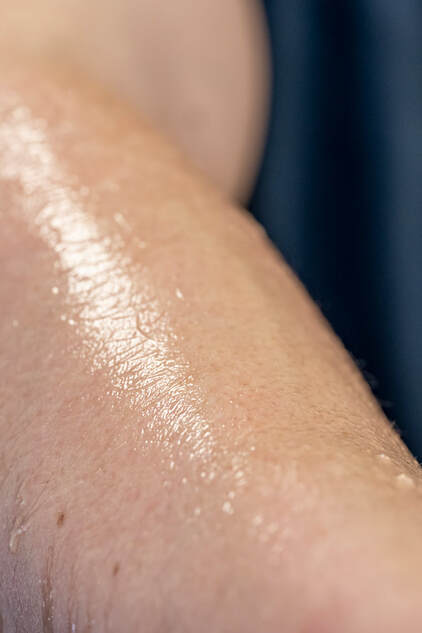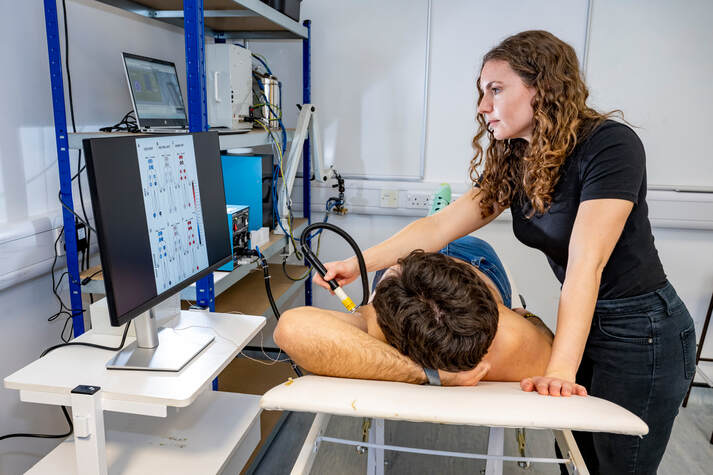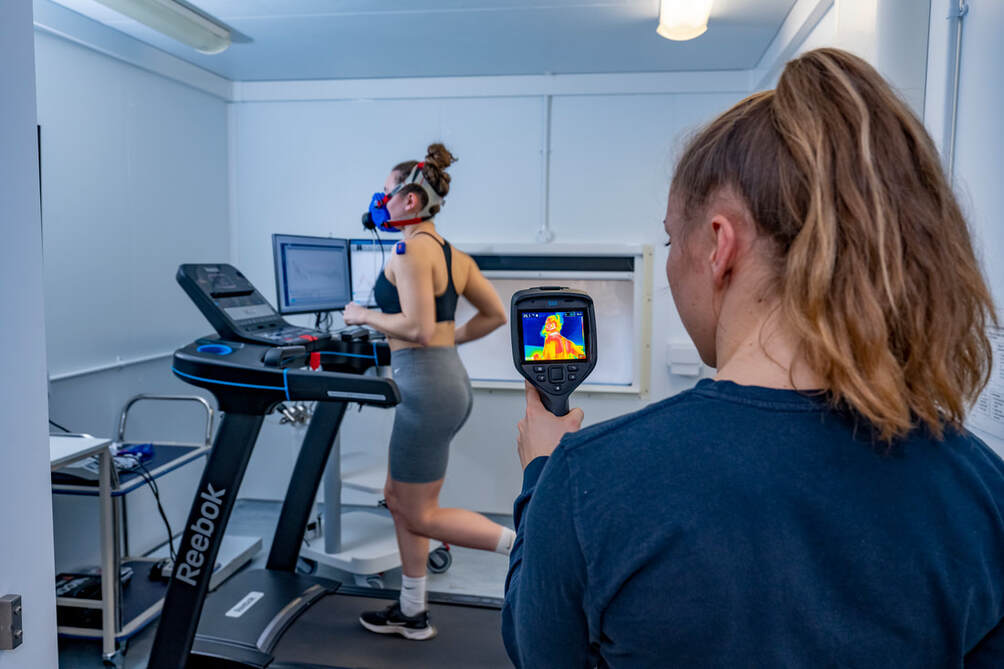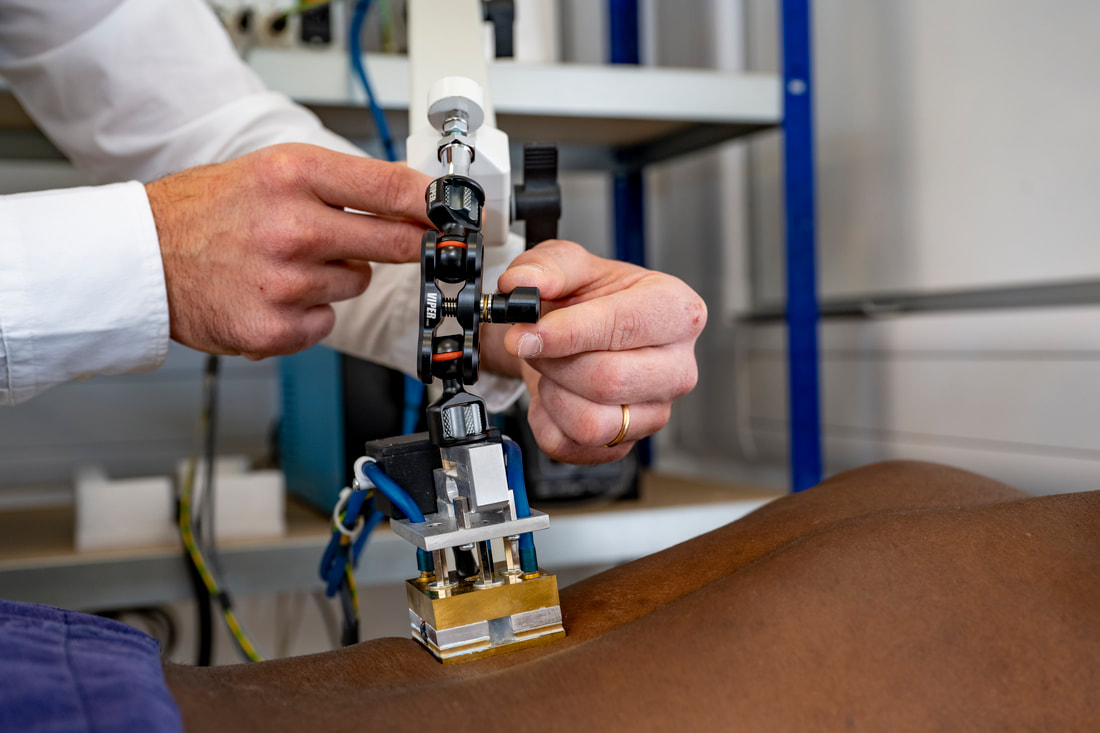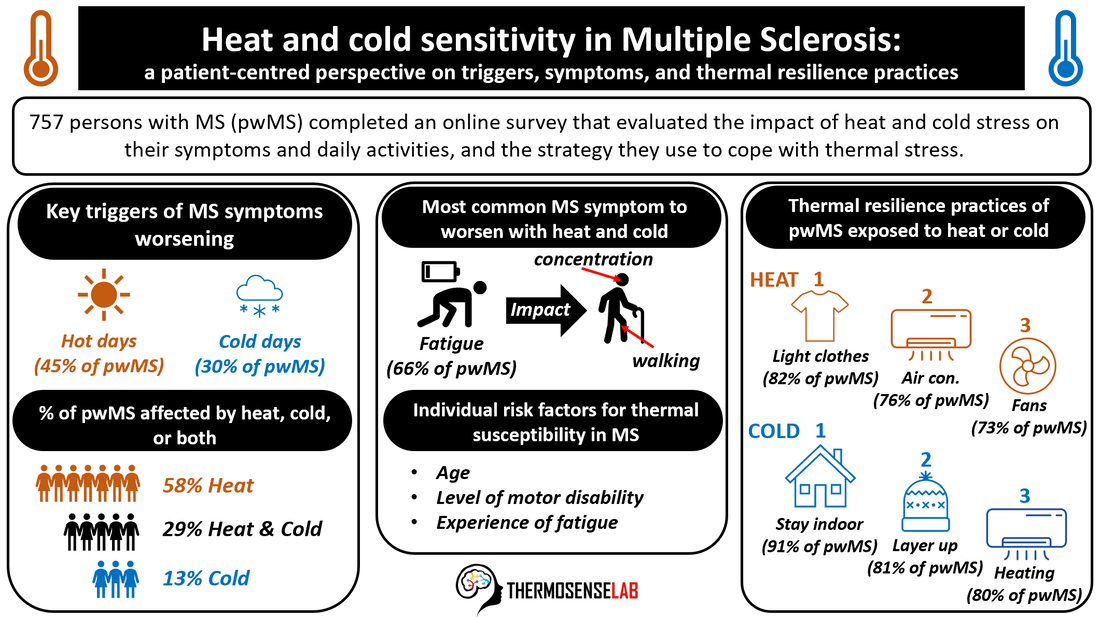Current research projects
Below are some examples of our ongoing reserach projects in the areas of human thermoregulation and skin sensing
Biophysical and perceptual mechanisms of human skin wetness sensing
Aim:
To identify sensory mechanisms that allow humans to sense wetness on their skin in the absence of hygroreceptors.
Research applications:
To inform the design of more comfortable sport clothing, of more effective absorbent products and anti-perspirant deodorants, of neuroprostetics providing sensory feedback to users.
Recent publications:
Collaborators:
Dr Solaiman Shokur (EPFL, Switzerland)
Dr Rochelle Ackerley (Aix Marseille Universite, France)
Dr Antonino Bianco (University of Palermo, Italy)
Procter & Gamble
To identify sensory mechanisms that allow humans to sense wetness on their skin in the absence of hygroreceptors.
Research applications:
To inform the design of more comfortable sport clothing, of more effective absorbent products and anti-perspirant deodorants, of neuroprostetics providing sensory feedback to users.
Recent publications:
- Merrick C, Rosati R, Filingeri D (2023). The visual perception of wetness: Multisensory integration of visual and tactile stimuli. Proceedings of the Institution of Mechanical Engineers, Part H: Journal of Engineering in Medicine. 2023;237(9):1072-1081. doi:10.1177/09544119231189105
- Ploumitsakou, M., Muheim, J., Felouzis, A., Carbonell Muñoz, N.-I., Iberite, F., Akouissi, O., Morosato, F., Gruppioni, E., Filingeri, D., Micera, S. and Shokur, S. (2024), Remapping Wetness Perception in Upper Limb Amputees. Adv. Intell. Syst., 6: 2300512. https://doi.org/10.1002/aisy.202300512
- Christogianni A, Bibb R, Filtness A, Filingeri D (2022). Regional skin wetness perception and its modulation by warm and cold whole body skin temperatures in people with multiple sclerosis. Am J Physiol Regul Integr Comp Physiol. 2022 Nov 1;323(5):R648-R660. doi: 10.1152/ajpregu.00149.2022. Epub 2022 Aug 29. PMID: 36036454; PMCID: PMC9602777.
Collaborators:
Dr Solaiman Shokur (EPFL, Switzerland)
Dr Rochelle Ackerley (Aix Marseille Universite, France)
Dr Antonino Bianco (University of Palermo, Italy)
Procter & Gamble
Female thermoregulation across the lifespan
Aim:
To characterize sex-specific autonomic and behavioural mechanisms of temperature regulation across the lifespan.
Research applications:
To inform the design of more comfortable sport clothing and of more effective personal comfort systems.
Key publications:
Collaborators:
Nike Inc.
To characterize sex-specific autonomic and behavioural mechanisms of temperature regulation across the lifespan.
Research applications:
To inform the design of more comfortable sport clothing and of more effective personal comfort systems.
Key publications:
- Blount H, Valenza A, Ward J, Caggiari S, Worsley PR, Filingeri D. The effect of female breast surface area on heat-activated sweat gland density and output. Exp Physiol. 2024 Jun 7. doi: 10.1113/EP091850. Epub ahead of print. PMID: 38847458.
- Valenza A, Blount H, Bianco A, Worsley PR, Filingeri D. Biophysical, thermo-physiological and perceptual determinants of cool-seeking behaviour during exercise in younger and older women. Exp Physiol. 2024 Feb;109(2):255-270. doi: 10.1113/EP091533. Epub 2023 Nov 16. PMID: 37975151; PMCID: PMC10988754.
- Filingeri D, Blount H, Valenza A. Female thermal sensitivity and behaviour across the lifespan: A unique journey. Exp Physiol. 2024 Mar 7. doi: 10.1113/EP091454. Epub ahead of print. PMID: 38451148.
Collaborators:
Nike Inc.
The role of the microclimate in skin tissue viability
Aim:
To characterize temperature-induced modulation of skin tolerance to applied mechanical loading and shear.
Research applications:
To inform the design of preventive strategies and technologies that maintain skin integrity and reduce the risk of pressure injury.
Recent publications:
Collaborators:
Dr Pete Worsley (University of Southampton)
Prof Dan Bader (University of Southampton)
Dr Konrad Rykaczewski (Arizona State University, USA)
To characterize temperature-induced modulation of skin tolerance to applied mechanical loading and shear.
Research applications:
To inform the design of preventive strategies and technologies that maintain skin integrity and reduce the risk of pressure injury.
Recent publications:
- Gordon RJFH, Worsley PR, Filingeri D. An evaluation of the effects of localised skin cooling on microvascular, inflammatory, structural, and perceptual responses to sustained mechanical loading of the sacrum: A study protocol. PLoS One. 2024 May 10;19(5):e0303342. doi: 10.1371/journal.pone.0303342. PMID: 38728306; PMCID: PMC11086830.
- Valenza A, Rykaczewski K, Martinez DM, Bianco A, Caggiari S, Worsley P, Filingeri D. (2023) Thermal modulation of skin friction at the finger pad. J Mech Behav Biomed Mater. 2023 Aug 12;146:106072.
- D Filingeri, PR Worsley, DL Bader (2021) It is time to be" cool" about maintaining skin integrity. Journal of tissue viability 30 (4), 465
Collaborators:
Dr Pete Worsley (University of Southampton)
Prof Dan Bader (University of Southampton)
Dr Konrad Rykaczewski (Arizona State University, USA)
Temperature sensitivity in Multiple Sclerosis
Aim:
To elucidate pathological mechanisms behind the impact of changes in body temperature on motor, sensory, and cognitive symptoms worsening in Multiple Sclerosis
Research applications:
To inform the design of public health interventions and smart wearables aimed at improving thermal resiliance in this clinical group.
Recent publications:
Collaborators:
Prof. Ian Galea (University Hospital Southampton, UK)
To elucidate pathological mechanisms behind the impact of changes in body temperature on motor, sensory, and cognitive symptoms worsening in Multiple Sclerosis
Research applications:
To inform the design of public health interventions and smart wearables aimed at improving thermal resiliance in this clinical group.
Recent publications:
- Christogianni A, Bibb R, Filingeri D. High-density thermal sensitivity maps of the body of people with multiple sclerosis: Implications for inclusive personal comfort systems. J Therm Biol. 2024 Jun 8;123:103887. doi: 10.1016/j.jtherbio.2024.103887. Epub ahead of print. PMID: 38878349.
- Christogianni A, Bibb R, Filingeri D. Body temperatures, thermal comfort, and neuropsychological responses to air temperatures ranging between 12°C and 39°C in people with Multiple Sclerosis. Physiol Behav. 2023 Jul 1;266:114179. doi: 10.1016/j.physbeh.2023.114179. Epub 2023 Apr 3. PMID: 37019295.
- A Christogianni, J O'Garro, R Bibb, A Filtness, D Filingeri (2022) Heat and cold sensitivity in multiple sclerosis: A patient-centred perspective on triggers, symptoms, and thermal resilience practices. Multiple Sclerosis and Related Disorders 67, 104075
Collaborators:
Prof. Ian Galea (University Hospital Southampton, UK)
